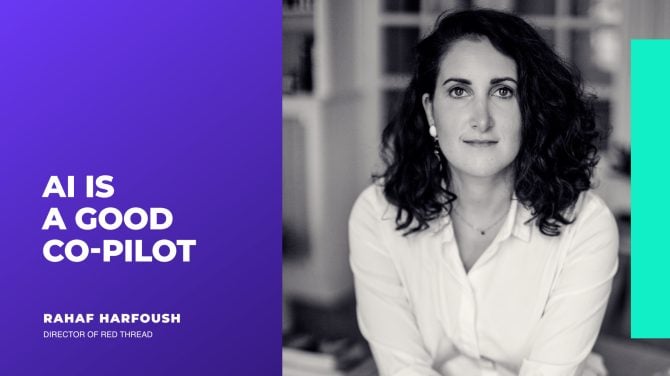Building a successful startup is not just about having a great idea or a strong team; it’s also about navigating complex legal matters that can profoundly impact the company’s trajectory. Founders often grapple with equity management issues related to deal structuring, Employee Stock Ownership Plans (ESOPs), cap tables, and fundraising, areas that can be fraught with challenges and potential pitfalls.
This article aims to shed light on these topics and provide guidance to founders based on the expertise of Andrei Hancu, General Counsel at SeedBlink and a highly active legal figure in the Romanian tech scene. Hancu has dedicated his career to helping startups and investors navigate the legal intricacies of their businesses, from formation to growth, with a special focus on equity crowdfunding. His insights are invaluable to anyone looking to understand the legal aspects of building and running a startup.
The Recursive: In your view, what are the key legal equity management challenges founders typically face, and how can they better prepare for them?
Andrei Hancu: At an early stage, the main challenges founders encounter usually revolve around their cap table, ESOP, and IP rights. However, these issues are resolved in later rounds, especially when raising money from experienced VCs.
Here are some of the common issues I’ve seen and some advice on how to avoid or tackle them:
1. The cap table they send out to investors has nothing to do with the real capitalization of their company.
Too often, I have seen cap tables that fail to accurately reflect the information in the official registers. This issue usually arises because the founders make a lot of changes to the initial shareholding without executing and filing the required paperwork for such changes to actually produce legal effects.
For example, the founders may realize that the initial split of the company’s shares is not fair anymore and reallocate the shares between them, or they may promise to give out part of their shares to a new founder, and they feel that simply circulating an Excel sheet between them is good enough, which unfortunately isn’t.
To avoid such issues, it’s important that the founders take all necessary steps to properly execute and register all corporate events with the relevant authorities prior to a new investment round.
As a key takeaway, maintaining an accurate and up-to-date cap table is essential for tracking ownership stakes, equity issuances, transfers, and other changes in the company’s capital structure. Founders can either keep updated Excel sheets or take the easier route and use an equity management platform such as Nimity.
2. Founders have trouble understanding how to correctly calculate the number of shares to be issued to new investors, especially in a round where prior convertible instruments (such as SAFEs or convertible notes) get converted into shares or when some investors have outstanding warrants.
In this respect, the first step must always be calculating the PPS (price per share) of the new equity round. Afterwards, you can calculate the number of new shares to be issued according to such PPS and the number of new shares to be issued according to pre-agreed discounts or valuation caps pertaining to warrants or convertible instruments such as SAFEs or convertible notes.
Not least, all investors in a round, unless benefiting from a discount, shall subscribe for new shares at the same PPS. Therefore, it is important to adjust the invested amount after calculating the number of shares to be issued.
For example, there are two investors who want to invest €1,000,000 and €300,000, and the price per share is €208.
The first investor would receive 1,000,000 / 208 = 4,807.69 shares. The second investor would receive 300,000 / 208 = 1,442.30 shares. Since, in most jurisdictions, you cannot issue fractional shares, the number of shares must be rounded. Therefore, the first investor would receive 4,808 shares and the second 1,442. Now, if we divide the investment amount by the rounded number of shares, we’ll obtain different PPSs: 1,000,000 / 4,808 = €207.98/share and 300,000 / 1,442 = €208.04 / share.
An easy fix is to adjust the investment amount as per the rounded number of shares: the first investor should pay 4,808 x 208 = €1,000,064 and the second investor should pay 1,442 x 208 = €299,936.
3. The number of issued shares is too low, and they have trouble allocating new shares to investors.
Especially with LLCs (limited liability companies) in the CEE region, there is a tendency to incorporate a company with a very low capitalization. Therefore, when they calculate the PPS in the context of a new equity financing round, they will achieve a high value, which makes it complicated (or even impossible) to allocate the corresponding number of new shares to investors.
Let’s exemplify with an LLC company incorporated with (i) a share capital of €50 and (ii) a capitalization of 50 shares of €1.00 each. They have a term sheet on the table with two investors who want to invest €70,000 and €30,000, respectively, at a pre-money valuation of €2,000,000.
This means that the PPS will be 2,000,000 divided by the total capitalization in the amount of 50 shares, or €40,000 per share. For the €70,000 amount, the number of shares to be issued would be 70,000 / 40,000 = 1,75 shares, and for the €30,000 amount, it would be 0.75 shares (30,000 / 40,000).
As mentioned in the previous example, in most jurisdictions you cannot issue fractional shares, so it becomes impossible to issue shares for the investor who wants to put in EUR 30,000 (since it’s less than 1 share). You could approximate the numbers of shares to 2 and 1, respectively, but this would mean that you give them shares in the amount of €80,000 and €40,000, respectively.
The solution is simple and straightforward: before the transaction, just decrease the nominal value to the legal minimum (e.g., €0.01/share), and if there are still not enough shares, maybe increase the share capital proportionally for each shareholder.
Now let’s assume the same situation, but with a capitalization of 5,000 shares of €0.01 each. In such a case, the PPS would be EUR 400 per share. Hence, for the €70,000 amount, the number of shares to be issued would be 70,000 / 400 = 175 shares, and for the €30,000 amount, it would be 75 shares (30,000 / 400). Quick and easy.
The takeaway would be “the bigger the number of issued shares, the better”.
4. Founders may be over-diluted
Although not very common, I’ve seen cases where the founders held less than 50% of the company’s shares at a very early stage. Usually, this happens when the startup is a spin-off from a bigger company or when founders raise money from angel investors “in the blind”, i.e., without considering the invested amount by reference to the company’s valuation. This tends to happen a lot when agreeing with the angel investor on a percentage of the company instead of a price per share.
Founders owning less than 50% of the company is a no-go for an institutional investor (e.g., a VC fund), since they are looking for startups where the founders are incentivized to remain in the company for the long run. Also, owning just above 50% (e.g., 60%) at an early stage is also a deal breaker since VCs are also considering the dilution of the founders in the following fundraising rounds.
5. No ESOP implemented
Because of limited funds, it’s harder for a startup to employ and retain top talent. Therefore, incentivizing employees and collaborators with stock option plans is key to being able to build great products.
However, putting an actual ESOP plan in place is not usually a priority for founders, and they believe that “promising shares” to key personnel is good enough. Although this may work in the first months of a startup’s life, it’s important to “officialize” the ESOP as soon as possible. By doing so, a relationship of trust is established quicker, and the ESOP beneficiaries have actual “skin in the game”.
Not least, having an ESOP in place is mandatory to raise money from VCs. Although not a deal breaker if the startup doesn’t have any in place when the fundraising round happens, it will certainly be a post-completion obligation in the transaction documentation.
Managing an ESOP (granting, vesting, and exercising options on a rolling basis) is not the easiest task in the world, but fortunately there are platforms covering ESOP management such as Nimity that can help remove the administrative burden and also give key personnel a “real feel” of how their work is generating them wealth.
6. Ownership of IP rights.
During the due diligence phase of the fundraising process, it is essential to show investors that the company owns the IP. This is a highly sensitive topic, and any indications that the IP rights have not been properly assigned to the company will deter any potential investor.
The best way to deal with this is to perform so-called “vendor due diligence,” which has the purpose of identifying and resolving potential legal issues before they come to the attention of the investors.
The Recursive: You have a special focus on equity crowdfunding matters. What should startups consider when looking at equity crowdfunding as a fundraising option? What potential legal pitfalls should they be aware of?
There are no specific legal pitfalls associated with equity crowdfunding in Europe. However, startups should carefully evaluate the equity crowdfunding platforms they consider using. It’s important to choose a reputable and authorized fundraising platform with a track record of successful campaigns and that also provides access to “smart money”, i.e., angel investors who can help the startup in other ways.
They can check if a crowdfunding platform is authorized under the ECSPR, on ESMA website: https://www.esma.europa.eu/document/register-crowdfunding-services-providers
The Recursive: Dealing with deal structuring between startups and VCs or angel investors can be complex. Based on your experience, could you highlight some common mistakes founders make during this process and share some tips on how to avoid them?
1. Bad timing for raising a priced (i.e., equity) round.
Especially in subsequent funding rounds and when approaching the end of the runway (i.e., when money starts to run out), founders tend to raise a pricey round as fast as possible. The problem is that the product may not be developed enough to show investors that the company is growing nicely, and the company may still be a few months away from reaching the promised KPIs. Therefore, the valuation at which the company can raise money will not be the best one, and a lower valuation means higher dilution for the founders.
Since it’s clear that priced rounds should be done when the company has something to show for it, such as traction or revenue, what about the “money running out” problem? Well, the answer is simple: stay away from a priced round until the company is ready and do an unpriced round instead. Actually, this kind of situation is exactly the reason why unpriced rounds exist.
An unpriced round means raising money without putting a price tag on the company, meaning that you can use convertible instruments (such as SAFEs or convertible notes) to extend the runway needed to reach those numbers, which would increase the company’s valuation. With a convertible instrument, founders avoid valuing their company, and investors are incentivized to take the risk and participate in the unpriced round because this means a discount or valuation cap in the following equity round.
2. Negotiating the deal terms
Especially in equity deals, founders tend to get hung up on clauses that sound extremely restrictive but are actually very good for them.
One of such clauses is the reverse vesting mechanism. Reverse vesting means that the shares the founders hold in their company are earned during a vesting period. If a founder holds 1,000 shares, such a mechanism may state that the 1,000 shares are “earned” monthly over 3 years with a 12-month cliff period (25% to vest one year after closing of the investment deal and the remaining 75% to vest in equal monthly installments over the next two years). This means that if, for any reason, the founder gives up on the team before 12 months have passed, the company has the right to buy back three-quarters of their shares from them, usually at nominal value, in order to re-allocate such shares to a new founder.
Almost every founder’s instinct is to say “no” to such a mechanism because nobody wants an investor to tell them that their shares are to be “earned”. However, this is incredibly useful for founders because it protects them in case one of the other founders decides to skip off to another project or becomes unable to perform their duties.
I’ve seen early-stage start-ups where one of the founders decides that start-up life is not for them and accepts a very good employment offer. However, they feel that they worked a lot to bring the company to its current state, so they refuse to give up their shares and insist on remaining on the Cap Table. What we have now is a very bad situation because the company just became uninvestible. No investor will support a business where an ex-cofounder still owns a sizable portion of the company’s equity, and they will demand that things change before investing.
If a reverse vesting mechanism were to be applicable, then such co-founders would be bound to exit the company (fully or partially, depending on the number of vested shares). Such a clause also has the advantage of being a deterrent for founders to leave the company because they may end up with nothing, especially in the first year when the risk of a founder leaving is higher.
When it comes to Employee Stock Ownership Plans (ESOPs) and managing a company’s cap table, what are the best ways for founders to plan and navigate these topics? Also, what’s the best course of action when local legislation makes ESOP very difficult?
First, founders need to establish the initial option pool, i.e., the number of shares to be eventually offered to key personnel after their options have vested. It’s important to remember that more option pools will follow as the company grows, so one pool won’t be enough. Not least, many founders think of ESOP shares as shares they would offer from their shareholding, which is incorrect because under most jurisdictions, ESOP shares need to be new shares issued by the company for such a plan to be better treated from a tax perspective.
After establishing the option pool, founders need to decide who to allocate these options to and under what conditions (time-based, performance-based, or a combination thereof). Next comes deciding whether to allow exercising options into shares as soon as the options vest or establish a moment in time when vested options could be exercised (e.g., at an exit event).
Ideally, vested options should be immediately exercisable. However, in most jurisdictions (including Romania and Bulgaria), this leads to some legal complications and administrative burdens. The main reason is that LLCs cannot issue non-voting shares in such jurisdictions, which means that personnel exercising their vested options will become shareholders with full rights.
This means that passing shareholder resolutions becomes burdensome, and founders may have to deal with people who left the company (maybe on not-so-good terms) and are still on the CapTable. Not to mention that a shareholder who holds equity but doesn’t contribute to the company anymore (such as an ex-employee) is called “dead equity,” and investors usually want to buy them out, which may become complicated and jeopardize the funding round if the dead equity holders are not willing to sell.
This is why most ESOPs I’ve seen (and prepared for clients) in Romania provide that vested options can only be exercised at an exit event, opposed to ESOPs in jurisdictions providing non-voting shares for LLCs where vested options can be immediately exercised.
Having the option to exercise vested options immediately is obviously preferable, because this gives employees the feeling that their hard work has been compensated. Furthermore, they could decide to sell their shares on the secondary market.
While establishing and managing ESOP pools is nowadays easy to do by using platforms such as Nimity, the problem of when to allow the exercise of options requires the use of a nominee structure, such as SeedBlink Trust.
Because the nominee structure holds voting shares in the name and on behalf of the employees (employees are beneficial owners while the nominee structure is the legal owner of the shares), using a nominee structure eliminates all problems associated with issuing voting shares. This basically means that voting rights are exercised in an organized manner by the nominee structure. Not least, you have all ESOP holders pooled under one structure, which means that any problem-maker would have diminished power to oppose an otherwise good deal, and the majority would decide democratically.
The Recursive: Finally, Andrei, could you share some insights on how you see the tech scene and startups evolving in Romania and the wider Central and Eastern European region? Are there any legal trends that founders should be aware of in this context?
It may sound like something you’ve heard before, but I strongly believe that CEE has immense potential.
The tech scene in Romania has been steadily growing over the past decade, with a notable increase in startup activity. Everybody knows about the success of Romanian-born UiPath, but there are others who have the potential to follow shortly, such as FlowX AI.
In the wider CEE region, countries such as Bulgaria, Poland, Hungary, the Czech Republic, and Estonia have also experienced significant growth in their tech sectors and startup ecosystems.
Countries in the CEE region have a lot of potential because of favorable business environments, skilled tech talent, and a lower cost of living compared to Western European countries. This means that CEE founders are able to build and sell quality products and services at a lower cost, which gives them an advantage over their competition.
Not least, the CEE region has a strong tradition of technical education, producing a skilled workforce. At the same time, public and private universities are starting to focus on technology and entrepreneurship programs, fostering a culture of innovation and providing a steady stream of talent for startups.
From a legal perspective, we are beginning to see more regulatory sandbox initiatives. Some countries in the CEE region have introduced regulatory sandbox programs to support innovation and experimentation in sectors like fintech, energy, and blockchain. These programs provide a controlled environment for startups to test new products or services, allowing them to navigate regulatory challenges more effectively (and cheaper).







